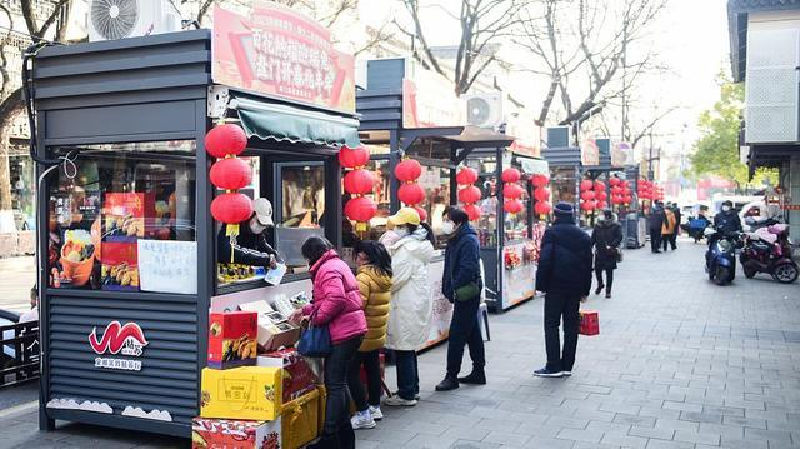China and Covid19
China’s Twenty Trending Covid Rule Changes and One Big Red Map
These are China’s new rules regarding the “further optimization of the Covid-19 epidemic prevention and control.”
Published
2 years agoon
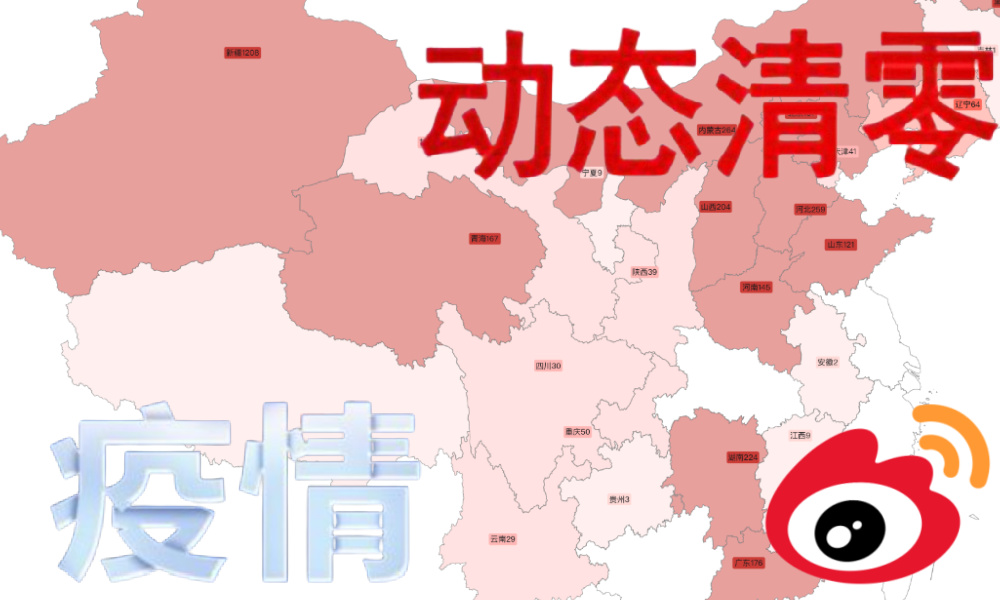
The Covid-19 tracking map of China is turning red: Xinjiang, Gansu, Qinghai, Inner Mongolia, Shanxi, Henan, Hubei, Guangdong, and Heilongjiang are among the provinces that have turned into ‘high-risk’ provinces where more than 100 new Covid cases have been detected around November 10-11, nearly three years after the start of China’s Covid-19 outbreak.
There currently are 3930 ‘high risk regions” in mainland China, and the epidemic situation keeps dominating discussions on Chinese social media.
“My entire Weibo timeline is just filled with complaints about the epidemic situation,” one Zhejiang-based Weibo user wrote on 11 November.
Xinjiang is the province in China that is currently seeing the highest number of new Covid cases. On November 10, the topic of Xinjiang detecting 657 new asymptomatic cases of Covid triggered online discussions on Weibo (#新疆新增无症状657例#).
Xinjiang has seen various lockdowns throughout the region since the summer of this year, but the harsh measures could not prevent the further spread of the virus. In October, residents were banned from leaving Xinjiang over more Covid-19 outbreaks, just weeks after restrictions were eased. Many areas of Ürümqi, the capital of Xinjiang Uyghur Autonomous Region, were placed back under lockdown again.
“We’ve been in lockdown for so long, and cases are still rising?! Where is the root of the problem? Is there no control? How come there are still hundreds of new cases? I don’t know what to say anymore. The people of Xinjiang have already gone through so much,” one popular post on Weibo said.
At the same time, newly announced measures to further optimize Covid prevention and control work also went trending on Weibo on November 11, receiving over fifty million views (#进一步优化防控工作的二十条措施公布#).
The Twenty Trending Covid Measures
On November 11, China’s National Health Commission published an official notice regarding the “further optimization of the Covid-19 epidemic prevention and control measures.”
As emphasized in state media reports on the notice and the meeting of the Standing Committee of the Political Bureau of the CPC Central Committee preceding it, China will unwaveringly stick to its dynamic zero-COVID policy and the measures are therefore not presented as a ‘relaxation’ of Covid-19 measures but rather as a way to make existing rules more efficient.
In short, these are the 20 announced measures (this is not a literal translation, just an explanation):
1. For close contacts of someone who has Covid-19, the “7-day centralized isolation + 3 days home health monitoring” measures have been adjusted to “5+3,” meaning 5 days of centralized isolation and 3 days home isolation.
2. Although close contacts will still need to go to centralized isolation, the close contacts of close contacts (‘secondary contacts’) will no longer be identified.
3. The 7-day centralized quarantine for people who return from a ‘high risk area’ will be turned into a 7-day home isolation.
4. Instead of ‘high’ – ‘medium’ – ‘low’ risk categories, zones will now be labeled as either ‘high’ or ‘low’ risk. High risk zone will be automatically downgraded to low risk zone after 5 consecutive days of no positive cases.
5. High-risk people who come from a closed loop working system will need to stay at home for 5 days and monitor their health, instead of being isolated for a week.
6. Nucleic acid testing should generally not be carried out for the entire population by administrative area, but instead the testing campaigns should be more local and precise.
7. The so-called “circuit breaking mechanism” under which China-bound flight routes were suspended for two weeks if an airline was found to carry a certain number of passengers testing positive for Covid will be abolished. Inbound travelers will need to have one certificate of a negative Covid test within 48 hours, instead of two.
8. Important business personnel or athlete groups etc. will not need to undergo an isolation period, but instead they will enter a ‘closed-loop bubble’ system for their business meetings, trainings or other activities; they will be transferred from place to place and cannot exit their bubble (the Winter Oympics in Beijing also had this system in place).
9. The Ct (cycle threshold) value of nucleic acid tests of international travellers will need to be less than 35. Those travelers showing a Ct value of 35-40 have to undergo further evaluation on virus transmission risk.
10. There will be a shortened quarantine period for international arrivals, going from a total of ten days to a total of eight days: instead of seven days of centralized quarantine and three days of health observation at home, in-bound travellers will be able to do five days of quarantine and three days of health observation at home.
11. There will be more focus on increasing resources for treatment of Covid patients, from ramping up stockpiles of Covid-19 drugs and medical equipment, to a further training of medical staff and a better preparation of inpatient and IC beds.
12. There will be more focus on further speeding up China’s vaccination and booster campaign, especially for the elderly population.
13. Research and development of Covid vaccines and drugs to treat Covid patients needs to be accelerated, especially to protect the elderly and the most vulnerable populations in China.
14. The overall protection of vulnerable groups in society, including senior citizens, pregnant women, immunocompromised patients, etc. will be further strengthened through health safety programs and effective Covid management of places where more vulnerable populations reside, including care homes and psychiatric hospitals.
15. There will be an increased focus on the effective implementation of the principle of the ‘four early’ measures to avoid large breakouts (early detection, early reporting, early isolation, early treatment).
16. Excessive Covid measures are not the way: there should be no ‘one-size-fits-all’ approach to local outbreaks, which also means no arbitrary lockdowns of schools or entire cities.
17. Local communities are required to improve the food supplies/distribution for residents who are isolated amid local lockdowns. Communities must have certain relevant information about local residents regarding their status; who lives alone, who is pregnant, who is elderly, or otherwise more vulnerable? Residents should always have access to emergency help.
18. On-campus epidemic control must be consistent, precise, and in accordance with science. There can be no unnecessarily long lockdowns of campuses.
19. The bigger enterprises/industrial parks should be consistent, clear, and precise about their epidemic prevention and control measures from the grassroots up, making sure the system of checking who gets in & out gets properly checked, etc. is in order. Basically, these companies should do all they can to ensure the smooth flow of logistics and to make sure production can safely continue.
20. People, or groups of people, who are left stranded amid a local outbreak should get timely help and receive assistance in getting evacuated.
Online sentiments
After the announcement of the twenty measures, questions linger on Weibo. Many people ask when these measures will be implemented.
“The joy after the release of the twenty measures was subdued by the grievances on Weibo,” one Weibo user wrote, while some Ürümqi locals wrote: “So when will our lockdown be lifted? I can’t tell black from white anymore.”
Besides Xinjiang, people in other regions are also concerned about the epidemic situation. There are a lot of complaints from Chongqing, for example (#重庆新增本土感染者783例#), but also from Zhengzhou, Guangzhou, and other cities and areas in high-risk provinces.
“These cities all did a good job in their anti-epidemic control but it’s now all gone to ruins, this shows that the virus can’t be controlled, and there is no way to eliminate it. We need to be ready for it and to live with it,” one Weibo commenter wrote.
“Of all the twenty measures announced, I think number 11 is most important,” one Weibo user wrote: “We need to increase medical resources.”
Another commenter said: “The Dynamic Zero Covid policy isn’t changing. Just because you’re updating the software doesn’t mean you have a new computer.”
One Shanghai blogger wrote: “I found that the so-called ‘anti-epidemic fans’ are two types of people. They are either those who are carefree, either children or those whose work has not been affected by the pandemic; and then those who have not experienced a lockdown themselves, they do not understand the difficulties of a lockdown and how they prevent you from making a living. For them, Covid is far removed from their reality, so they just do not get it.”
Despite all criticism from those who think nothing is going to change, some also express worries about the things that might now change. As one Weibo user wrote on November 12:
“To be honest, I wasn’t anxious at all at the beginning of the epidemic, because I knew the government would control everything. But yesterday and today I began to be very worried because we are actually already easing [measures]. Once we let go, the epidemic will really break out. There will be mass infections and deaths. I’m not necessarily afraid of getting infected, I can take some Chinese medicine and I’m sure I’ll be ok, but we don’t know the long-term effects.”
Overall, there is a sense of anxiousness in the online responses to China’s current Covid outbreaks and the new Covid measures. There are those who are anxious about when their current lockdowns will finally come to an end, and then there are those who are worried about what a possible ‘easing’ of measures might actually mean.
The majority of people at least agree on one thing: there is no easy way ‘out.’ This might just become a long, long winter.
By Manya Koetse
Follow @WhatsOnWeibo
Get the story behind the hashtag. Subscribe to What’s on Weibo here to receive our newsletter and get access to our latest articles:
Spotted a mistake or want to add something? Please let us know in comments below or email us. First-time commenters, please be patient – we will have to manually approve your comment before it appears.
©2022 Whatsonweibo. All rights reserved. Do not reproduce our content without permission – you can contact us at info@whatsonweibo.com.
Manya Koetse is the founder and editor-in-chief of whatsonweibo.com. She is a writer, public speaker, and researcher (Sinologist, MPhil) on social trends, digital developments, and new media in an ever-changing China, with a focus on Chinese society, pop culture, and gender issues. She shares her love for hotpot on hotpotambassador.com. Contact at manya@whatsonweibo.com, or follow on Twitter.

Also Read
China and Covid19
Sick Kids, Worried Parents, Overcrowded Hospitals: China’s Peak Flu Season on the Way
“Besides Mycoplasma infections, cases include influenza, Covid-19, Norovirus, and Adenovirus. Heading straight to the hospital could mean entering a cesspool of viruses.”
Published
8 months agoon
November 22, 2023
In the early morning of November 21, parents are already queuing up at Xi’an Children’s Hospital with their sons and daughters. It’s not even the line for a doctor’s appointment, but rather for the removal of IV needles.
The scene was captured in a recent video, only one among many videos and images that have been making their rounds on Chinese social media these days (#凌晨的儿童医院拔针也要排队#).
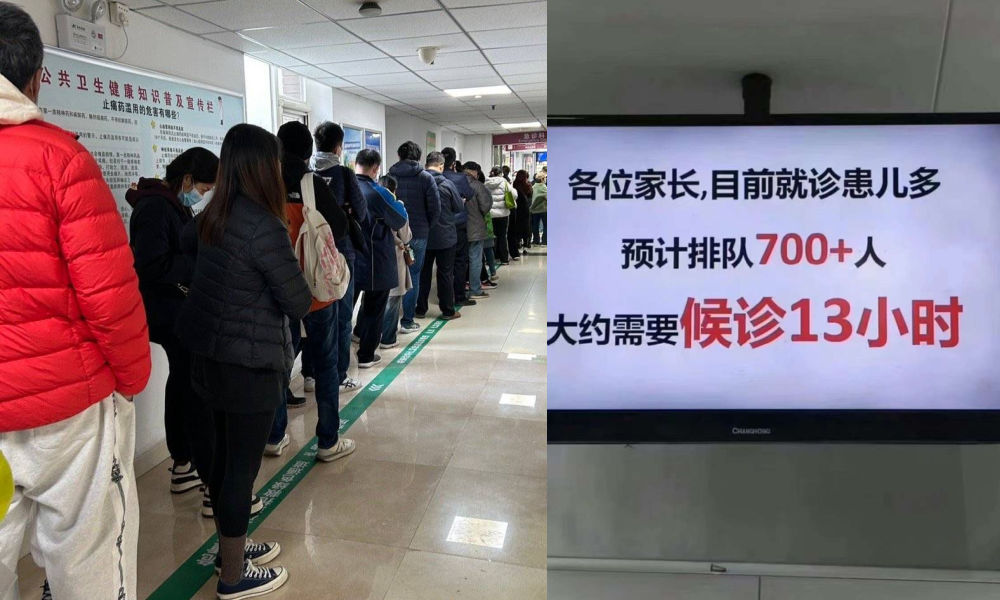
One photo shows a bulletin board at a local hospital warning parents that over 700 patients are waiting in line, estimating a waiting time of more than 13 hours to see a doctor.
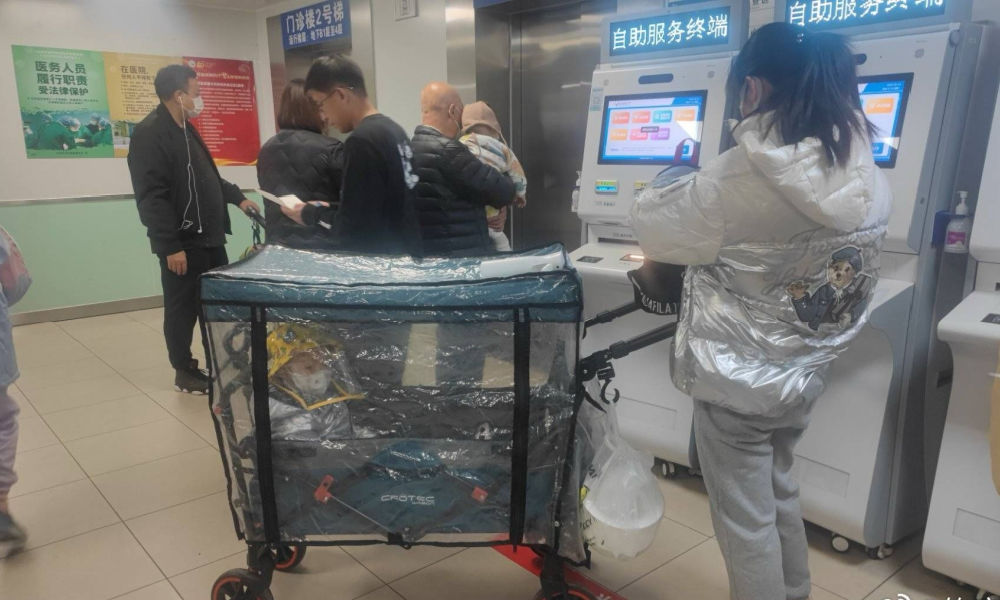
Another image shows children doing their homework while hooked up on an IV.

Recent discussions on Chinese social media platforms have highlighted a notable surge in flu cases. The ongoing flu season is particularly impacting children, with multiple viruses concurrently circulating and contributing to a high incidence of respiratory infections.
Among the prevalent respiratory infections affecting children are Mycoplasma pneumoniae infections, influenza, and Adenovirus infection.
The spike in flu cases has resulted in overcrowded children’s hospitals in Beijing and other Chinese cities. Parents sometimes have to wait in line for hours to get an appointment or pick up medication.
According to one reporter at Haibao News (海报新闻), there were so many patients at the Children’s Hospital of Capital Institute of Pediatrics (首都儿科研究所) on November 21st that the outpatient desk stopped accepting new patients by the afternoon. Meanwhile, 628 people were waiting in line to see a doctor at the emergency department.
Reflecting on the past few years, the current flu season marks China’s first ‘normal’ flu peak season since the outbreak of Covid-19 in late 2019 / early 2020 and the end of its stringent zero-Covid policies in December 2022. Compared to many other countries, wearing masks was also commonplace for much longer following the relaxation of Covid policies.
Hu Xijin, the well-known political commentator, noted on Weibo that this year’s flu season seems to be far worse than that of the years before. He also shared that his own granddaughter was suffering from a 40 degrees fever.
“We’re all running a fever in our home. But I didn’t dare to go to the hospital today, although I want my child to go to the hospital tomorrow. I heard waiting times are up to five hours now,” one Weibo user wrote.
“Half of the kids in my child’s class are sick now. The hospital is overflowing with people,” another person commented.
One mother described how her 7-year-old child had been running a fever for eight days already. Seeking medical attention on the first day, the initial diagnosis was a cold. As the fever persisted, daily visits to the hospital ensued, involving multiple hours for IV fluid administration.
While this account stems from a single Weibo post within a fever-advice community, it highlights a broader trend: many parents swiftly resort to hospital visits at the first signs of flu or fever. Several factors contribute to this, including a lack of General Practitioners in China, making hospitals the primary choice for medical consultations also in non-urgent cases.
There is also a strong belief in the efficacy of IV infusion therapy, whether fluid-based or containing medication, as the quickest path to recovery. Multiple factors contribute to the widespread and sometimes irrational use of IV infusions in China. Some clinics are profit-driven and see IV infusions as a way to make more money. Widespread expectations among Chinese patients that IV infusions will make them feel better also play a role, along with some physicians’ lacking knowledge of IV therapy or their uncertainty to distinguish bacterial from viral infections (read more here)
To prevent an overwhelming influx of patients to hospitals, Chinese state media, citing specialists, advise parents to seek medical attention at the hospital only for sick infants under three months old displaying clear signs of fever (with or without cough). For older children, it is recommended to consult a doctor if a high fever persists for 3 to 5 days or if there is a deterioration in respiratory symptoms. Children dealing with fever and (mild) respiratory symptoms can otherwise recover at home.
One Weibo blogger (@奶霸知道) warned parents that taking their child straight to the hospital on the first day of them getting sick could actually be a bad idea. They write:
“(..) pediatric departments are already packed with patients, and it’s not just Mycoplasma infections anymore. Cases include influenza, Covid-19, Norovirus, and Adenovirus. And then, of course, those with bad luck are cross-infected with multiple viruses at the same time, leading to endless cycles. Therefore, if your child experiences mild coughing or a slight fever, consider observing at home first. Heading straight to the hospital could mean entering a cesspool of viruses.”
The hashtag for “fever” saw over 350 million clicks on Weibo within one day on November 22.
Meanwhile, there are also other ongoing discussions on Weibo surrounding the current flu season. One topic revolves around whether children should continue doing their homework while receiving IV fluids in the hospital. Some hospitals have designated special desks and study areas for children.
Although some commenters commend the hospitals for being so considerate, others also remind the parents not to pressure their kids too much and to let them rest when they are not feeling well.
Opinions vary: although some on Chinese social media say it's very thoughtful for hospitals to set up areas where kids can study and read, others blame parents for pressuring their kids to do homework at the hospital instead of resting when not feeling well. pic.twitter.com/gnQD9tFW2c
— Manya Koetse (@manyapan) November 22, 2023
By Manya Koetse, with contributions from Miranda Barnes
Get the story behind the hashtag. Subscribe to What’s on Weibo here to receive our newsletter and get access to our latest articles:
Spotted a mistake or want to add something? Please let us know in comments below or email us. First-time commenters, please be patient – we will have to manually approve your comment before it appears.
©2023 Whatsonweibo. All rights reserved. Do not reproduce our content without permission – you can contact us at info@whatsonweibo.com.
China and Covid19
Repurposing China’s Abandoned Nucleic Acid Booths: 10 Innovative Transformations
Abandoned nucleic acid booths are getting a second life through these new initiatives.
Published
1 year agoon
May 19, 2023
During the pandemic, nucleic acid testing booths in Chinese cities were primarily focused on maintaining physical distance. Now, empty booths are being repurposed to bring people together, serving as new spaces to serve the community and promote social engagement.
Just months ago, nucleic acid testing booths were the most lively spots of some Chinese cities. During the 2022 Shanghai summer, for example, there were massive queues in front of the city’s nucleic acid booths, as people needed a negative PCR test no older than 72 hours for accessing public transport, going to work, or visiting markets and malls.
The word ‘hésuān tíng‘ (核酸亭), nucleic acid booth (also:核酸采样小屋), became a part of China’s pandemic lexicon, just like hésuān dìtú (核酸地图), the nucleic acid test map lauched in May 2022 that would show where you can get a nucleic test.
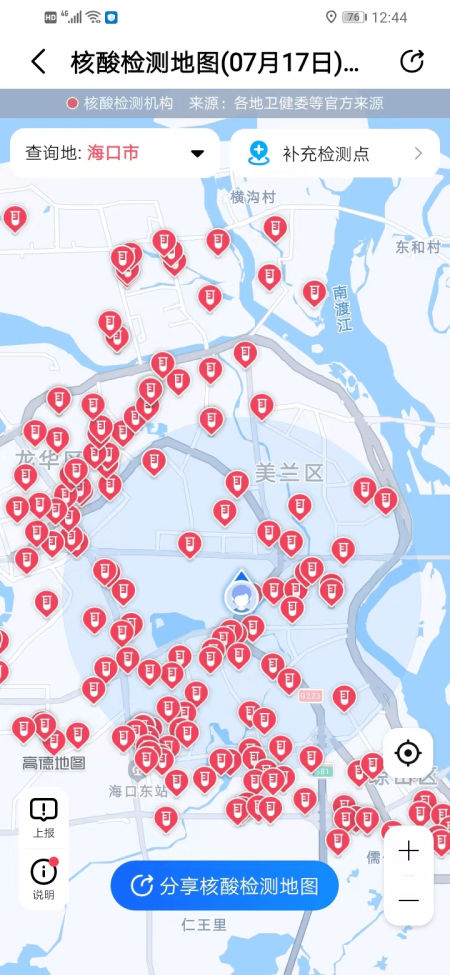
Example of nucleic acid test map.
During Halloween parties in Shanghai in 2022, some people even came dressed up as nucleic test booths – although local authorities could not appreciate the creative costume.
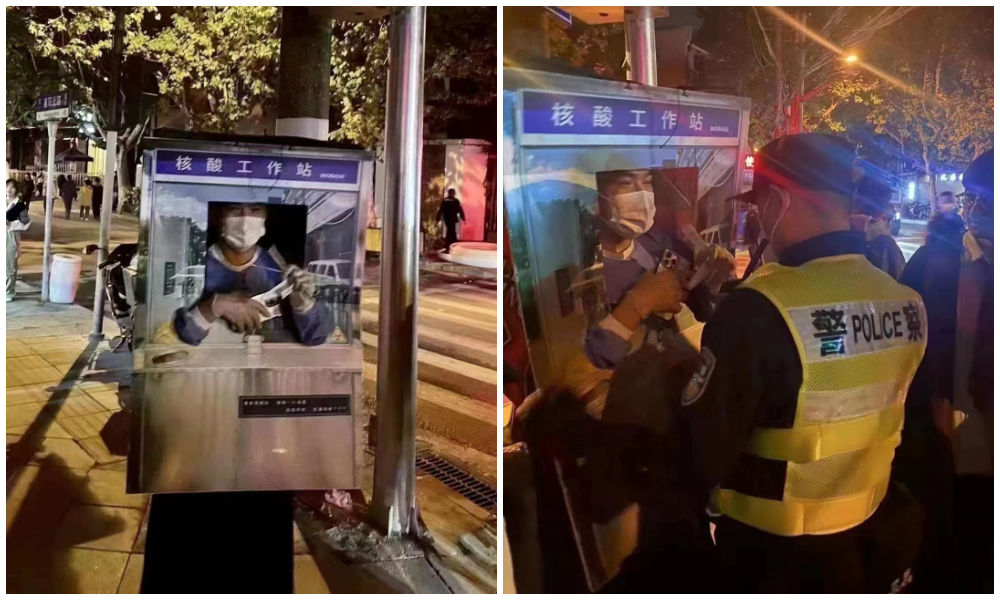
Halloween 2022: dressed up as nucliec acid booths. Via @manyapan twitter.
In December 2022, along with the announced changed rules in China’s ‘zero Covid’ approach, nucleic acid booths were suddenly left dismantled and empty.
With many cities spending millions to set up these booths in central locations, the question soon arose: what should they do with the abandoned booths?
This question also relates to who actually owns them, since the ownership is mixed. Some booths were purchased by authorities, others were bought by companies, and there are also local communities owning their own testing booths. Depending on the contracts and legal implications, not all booths are able to get a new function or be removed yet (Worker’s Daily).
In Tianjin, a total of 266 nucleic acid booths located in Jinghai District were listed for public acquisition earlier this month, and they were acquired for 4.78 million yuan (US$683.300) by a local food and beverage company which will transform the booths into convenience service points, selling snacks or providing other services.
Tianjin is not the only city where old nucleic acid testing booths are being repurposed. While some booths have been discarded, some companies and/or local governments – in cooperation with local communities – have demonstrated creativity by transforming the booths into new landmarks. Since the start of 2023, different cities and districts across China have already begun to repurpose testing booths. Here, we will explore ten different way in which China’s abandoned nucleic test booths get a second chance at a meaningful existence.
1: Pharmacy/Medical Booths
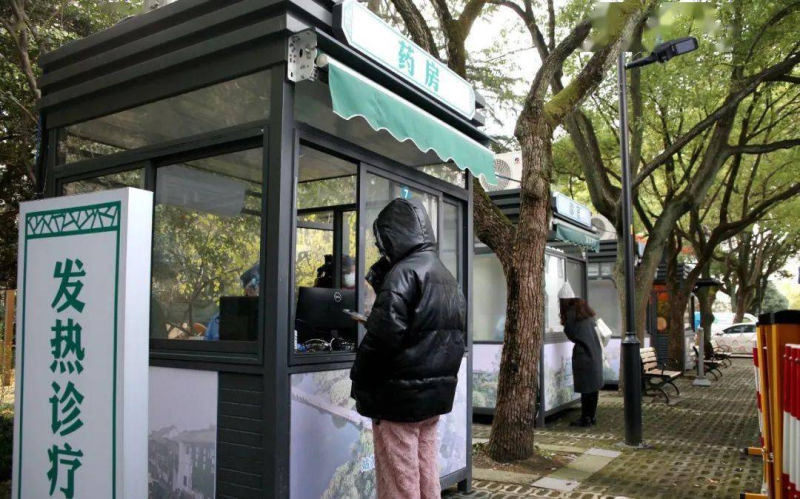
Via ‘copyquan’ republished on Sohu.
Blogger ‘copyquan’ recently explored various ways in which abandoned PCR testing points are being repurposed.
One way in which they are used is as small pharmacies or as medical service points for local residents (居民医疗点). Alleviating the strain on hospitals and pharmacies, this was one of the earliest ways in which the booths were repurposed back in December of 2022 and January of 2023.
Chongqing, Tianjin, and Suzhou were among earlier cities where some testing booths were transformed into convenient medical facilities.
2: Market Stalls
In Suzhou, Jiangsu province, the local government transformed vacant nucleic acid booths into market stalls for the Spring Festival in January 2022, offering them free of charge to businesses to sell local products, snacks, and traditional New Year goods.
The idea was not just meant as a way for small businesses to conveniently sell to local residents, it was also meant as a way to attract more shoppers and promote other businesses in the neighborhood.
3: Community Service Center
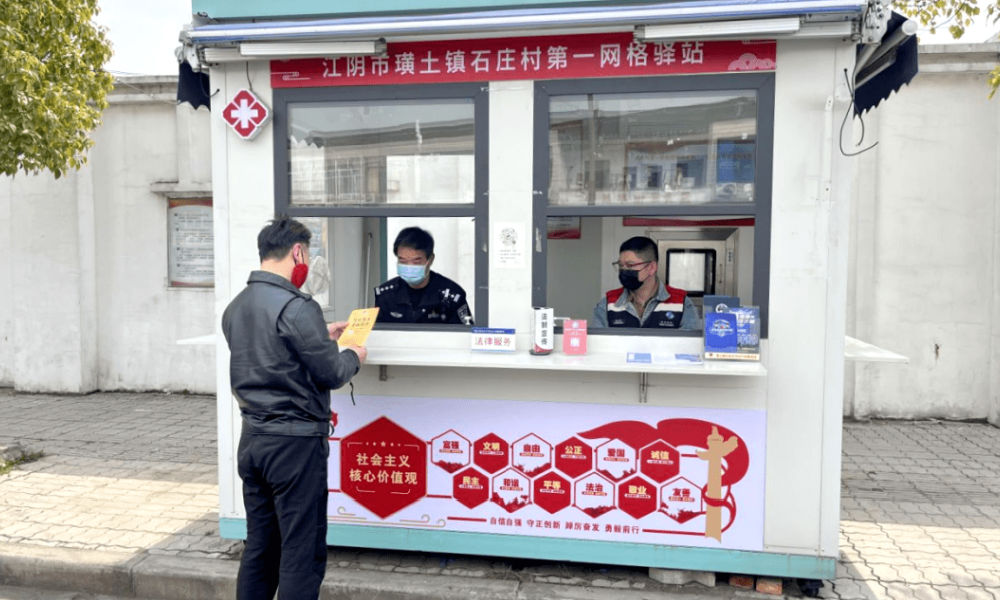
Small grid community center in Shizhuang Village, image via Sohu.
Some residential areas have transformed their local nucleic acid testing booths into community service centers, offering all kinds of convenient services to neighborhood residents.
These little station are called wǎnggé yìzhàn (网格驿站) or “grid service stations,” and they can serve as small community centers where residents can get various kinds of care and support.
4: “Refuel” Stations
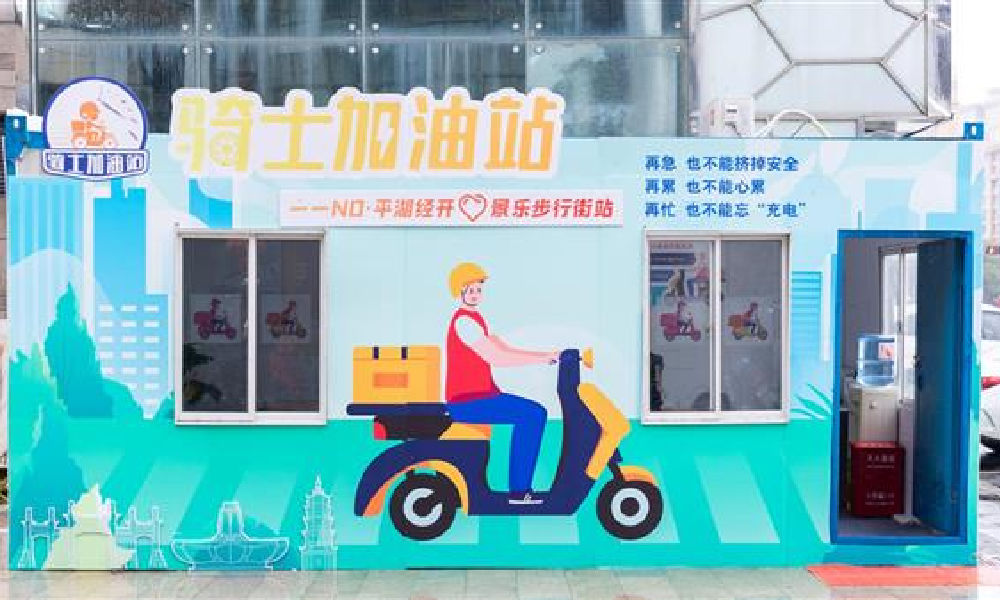
In February of this year, 100 idle nucleic acid sampling booths were transformed into so-called “Rider Refuel Stations” (骑士加油站) in Zhejiang’s Pinghu. Although it initially sounds like a place where delivery riders can fill up their fuel tanks, it is actually meant as a place where they themselves can recharge.
Delivery riders and other outdoor workers can come to the ‘refuel’ station to drink some water or tea, warm their hands, warm up some food and take a quick nap.
5: Free Libraries
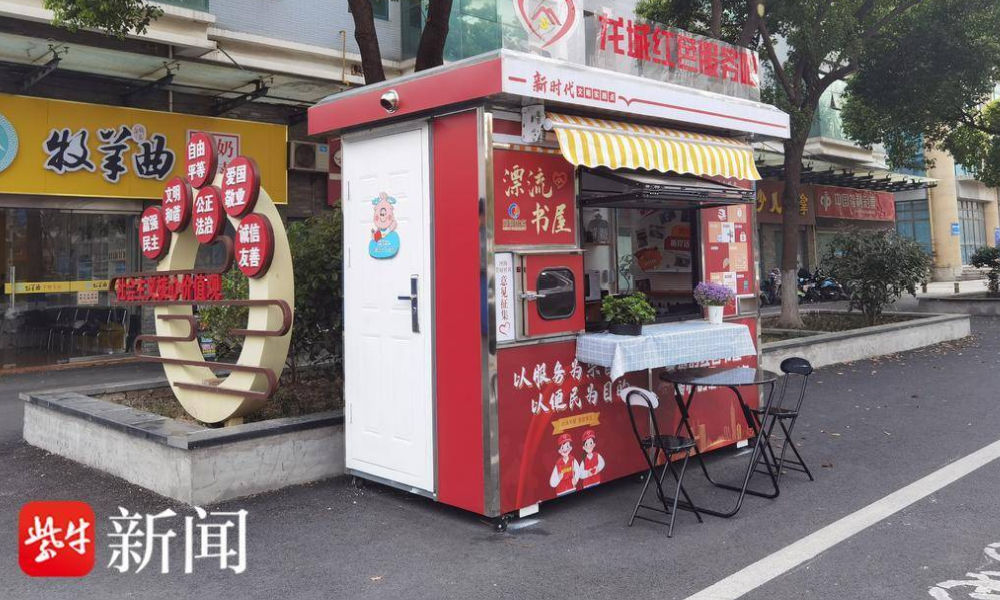
image via sohu.
In various Chinese cities, abandoned nucleic acid booths have been transformed into little free libraries where people can grab some books to read, donate or return other books, and sit down for some reading.
Changzhou is one of the places where you’ll find such “drifting bookstores” (漂流书屋) (see video), but similar initiatives have also been launched in other places, including Suzhou.
6: Study Space

Photos via Copyquan’s article on Sohu.
Another innovative way in which old testing points are being repurposed is by turning them into places where students can sit together to study. The so-called “Let’s Study Space” (一间习吧), fully airconditioned, are opened from 8 in the morning until 22:00 at night.
Students – or any citizens who would like a nice place to study – can make online reservations with their ID cards and scan a QR code to enter the study rooms.
There are currently ten study booths in Anji, and the popular project is an initiative by the Anji County Library in Zhejiang (see video).
7: Beer Kiosk

Hoegaarden beer shop, image via Creative Adquan.
Changing an old nucleic acid testing booth into a beer bar is a marketing initiative by the Shanghai McCann ad agency for the Belgium beer brand Hoegaarden.
The idea behind the bar is to celebrate a new spring after the pandemic. The ad agency has revamped a total of six formr nucleic acid booths into small Hoegaarden ‘beer gardens.’
8: Police Box
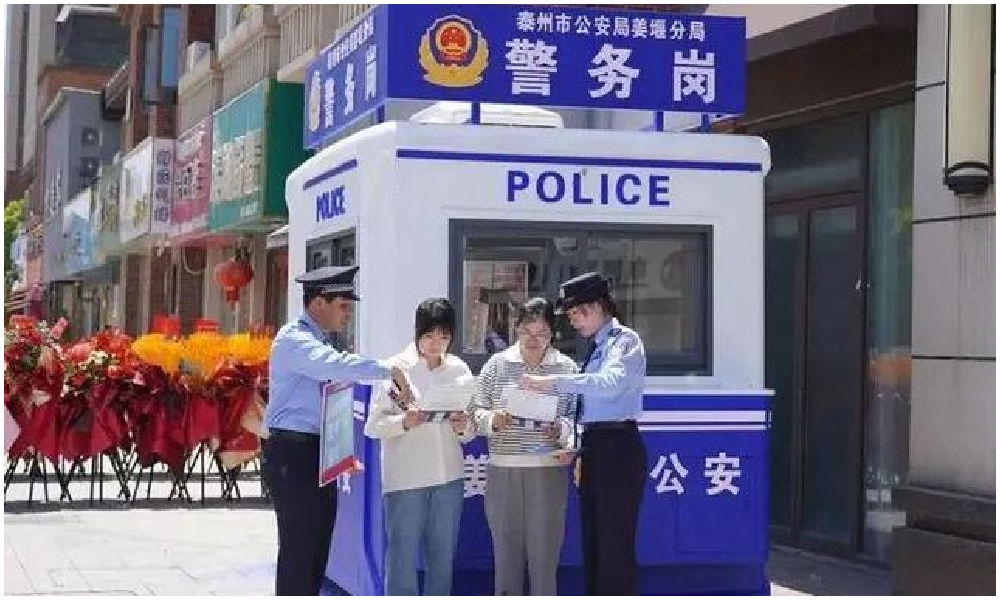
In Taizhou City, Jiangsu Province, authorities have repurposed old testing booths and transformed them into ‘police boxes’ (警务岗亭) to enhance security and improve the visibility of city police among the public.
Currently, a total of eight vacant nucleic acid booths have been renovated into modern police stations, serving as key points for police presence and interaction with the community.
9: Lottery Ticket Booths
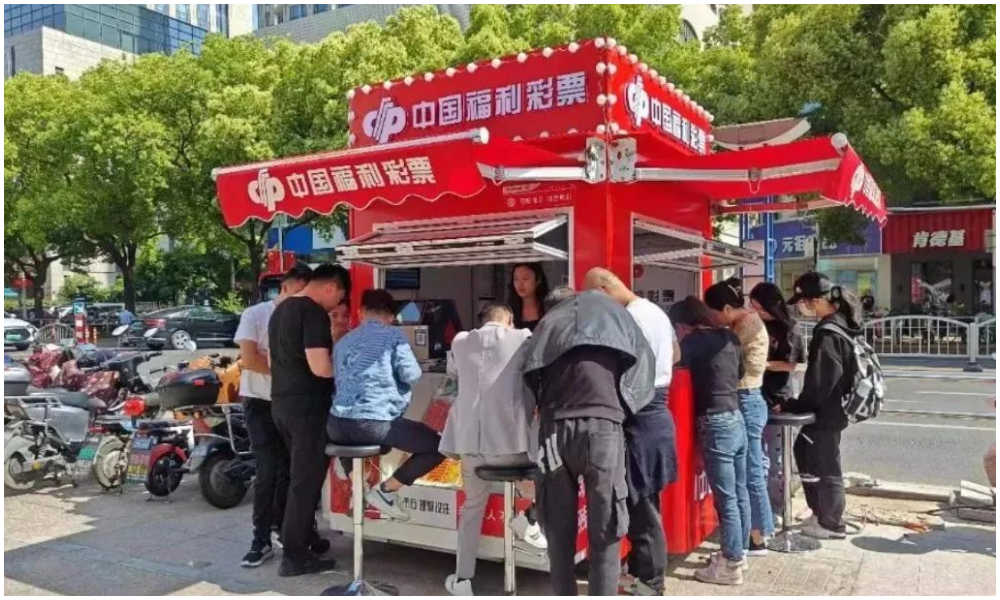
Image via The Paper
Some nucleic acid booths have now been turned into small shops selling lottery tickets for the China Welfare Lottery. One such place turning the kiosks into lottery shops is Songjiang in Shanghai.
Using the booths like this is a win-win situation: they are placed in central locations so it is more convenient for locals to get their lottery tickets, and on the other hand, the sales also help the community, as the profits are used for welfare projects, including care for the elderly.
10: Mini Fire Stations

Micro fire stations, images via ZjNews.
Some communities decided that it would be useful to repurpose the testing points and turn them into mini fire kiosks, just allowing enough space for the necessary equipment to quickly respond to fire emergencies.
Want to read more about the end of ‘zero Covid’ in China? Check our other articles here.
By Manya Koetse,
Get the story behind the hashtag. Subscribe to What’s on Weibo here to receive our newsletter and get access to our latest articles:
Spotted a mistake or want to add something? Please let us know in comments below or email us. First-time commenters, please be patient – we will have to manually approve your comment before it appears.
©2023 Whatsonweibo. All rights reserved. Do not reproduce our content without permission – you can contact us at info@whatsonweibo.com.
Subscribe

Weibo Watch: The Future is Here

“Bye Bye Biden”: Biden’s Many Nicknames in Chinese

Enjoying the ‘Sea’ in Beijing’s Ditan Park

A Triumph for “Comrade Trump”: Chinese Social Media Reactions to Trump Rally Shooting

Weibo Watch: Get Up, Stand Up

The Tragic Story of “Fat Cat”: How a Chinese Gamer’s Suicide Went Viral

“Old Bull Eating Young Grass”: 86-Year-Old Chinese Painter Fan Zeng Marries 36-Year-Old Xu Meng

A Brew of Controversy: Lu Xun and LELECHA’s ‘Smoky’ Oolong Tea

Singing Competition or Patriotic Fight? Hunan TV’s ‘Singer 2024’ Stirs Nationalistic Sentiments

Zara Dress Goes Viral in China for Resemblance to Haidilao Apron

Weibo Watch: The Battle for the Bottom Bed

About the “AI Chatbot Based on Xi Jinping” Story

China’s Intensified Social Media Propaganda: “Taiwan Must Return to Motherland”

Weibo Watch: Telling China’s Stories Wrong

Saying Goodbye to “Uncle Wang”: Wang Wenbin Becomes Chinese Ambassador to Cambodia
Get in touch
Would you like to become a contributor, or do you have any tips or suggestions? Get in touch here!
Popular Reads
-

 China Insight3 months ago
China Insight3 months agoThe Tragic Story of “Fat Cat”: How a Chinese Gamer’s Suicide Went Viral
-

 China Music4 months ago
China Music4 months agoThe Chinese Viral TikTok Song Explained (No, It’s Not About Samsung)
-

 China Digital10 months ago
China Digital10 months agoToo Sexy for Weibo? Online Discussions on the Concept of ‘Cābiān’
-

 China Arts & Entertainment12 months ago
China Arts & Entertainment12 months agoBehind 8 Billion Streams: Who is Dao Lang Cursing in the Chinese Hit Song ‘Luocha Kingdom’?





